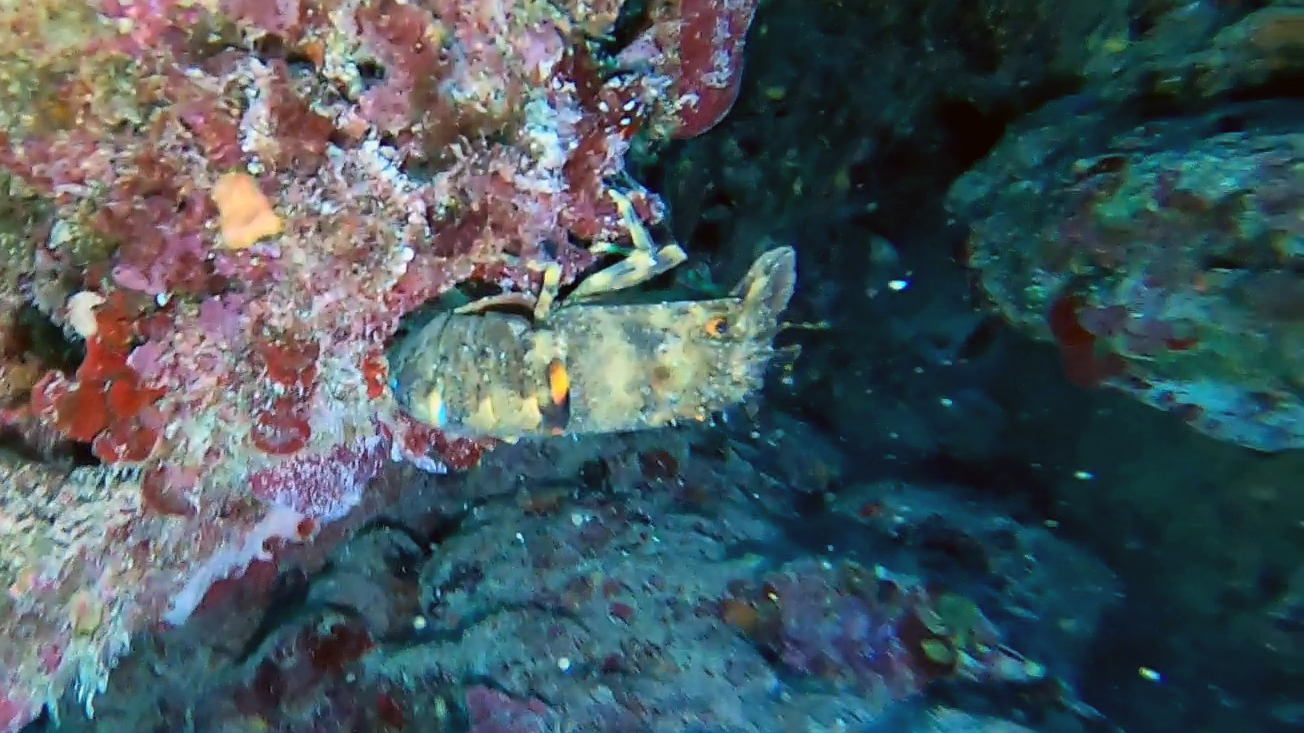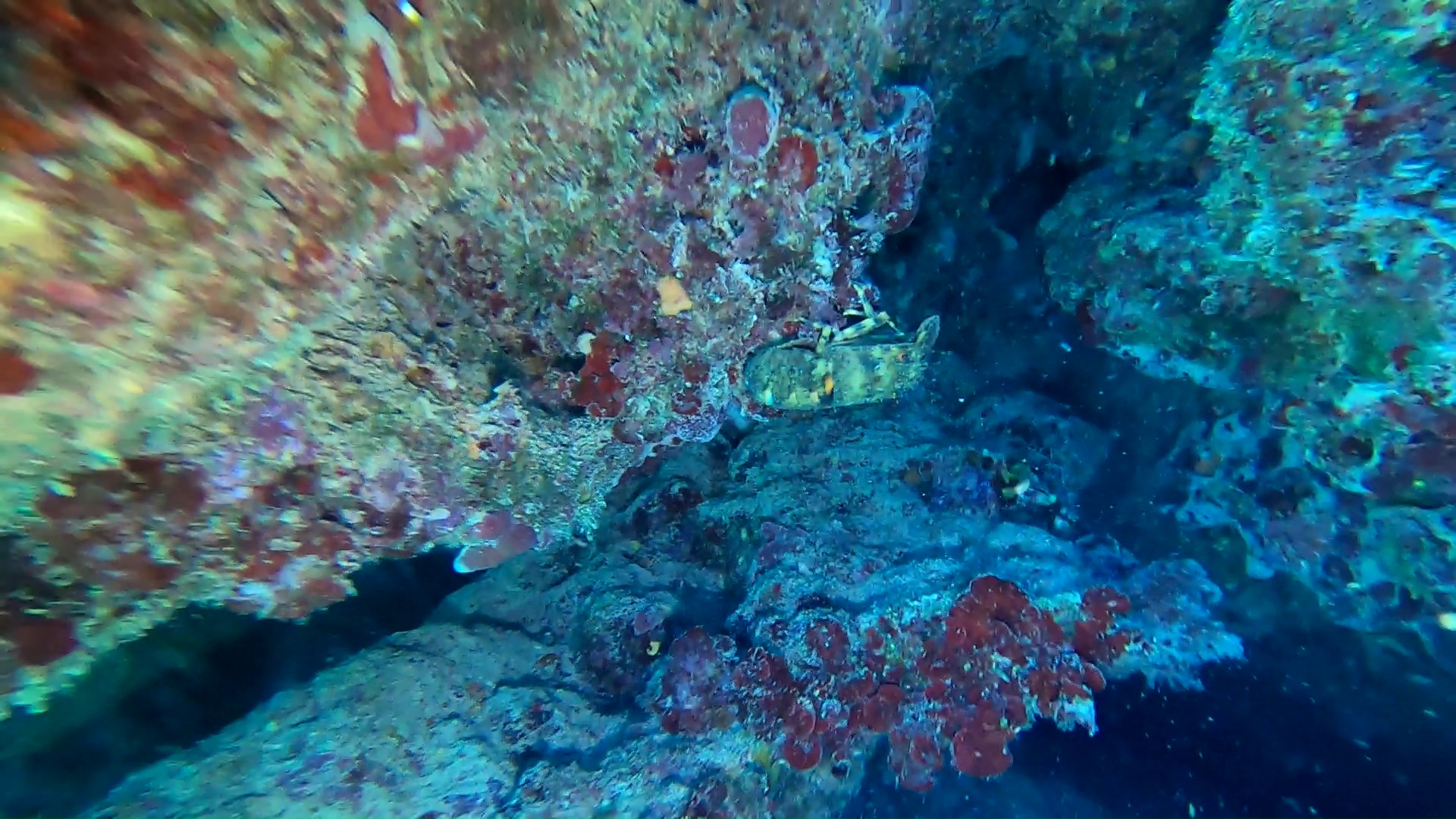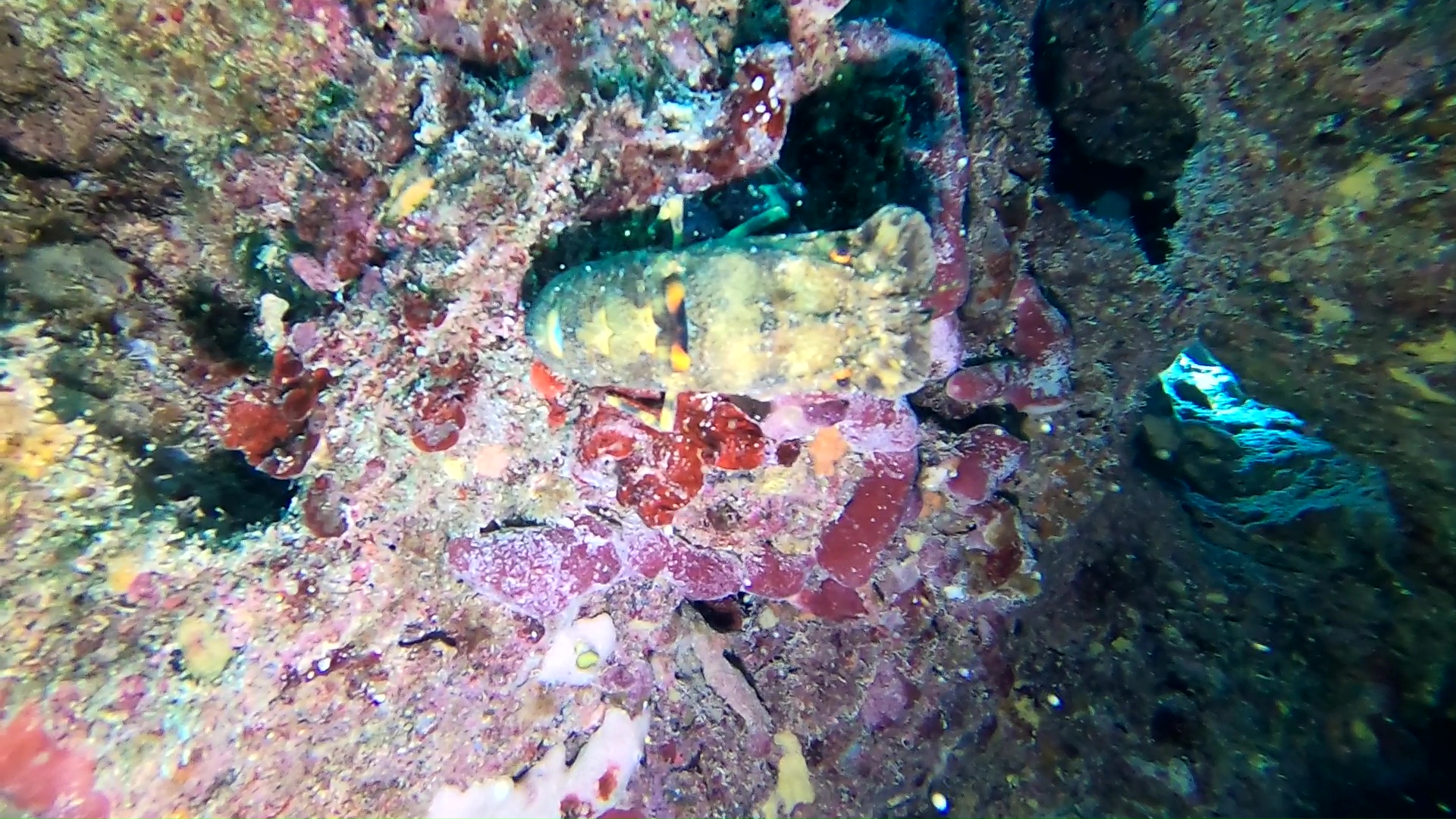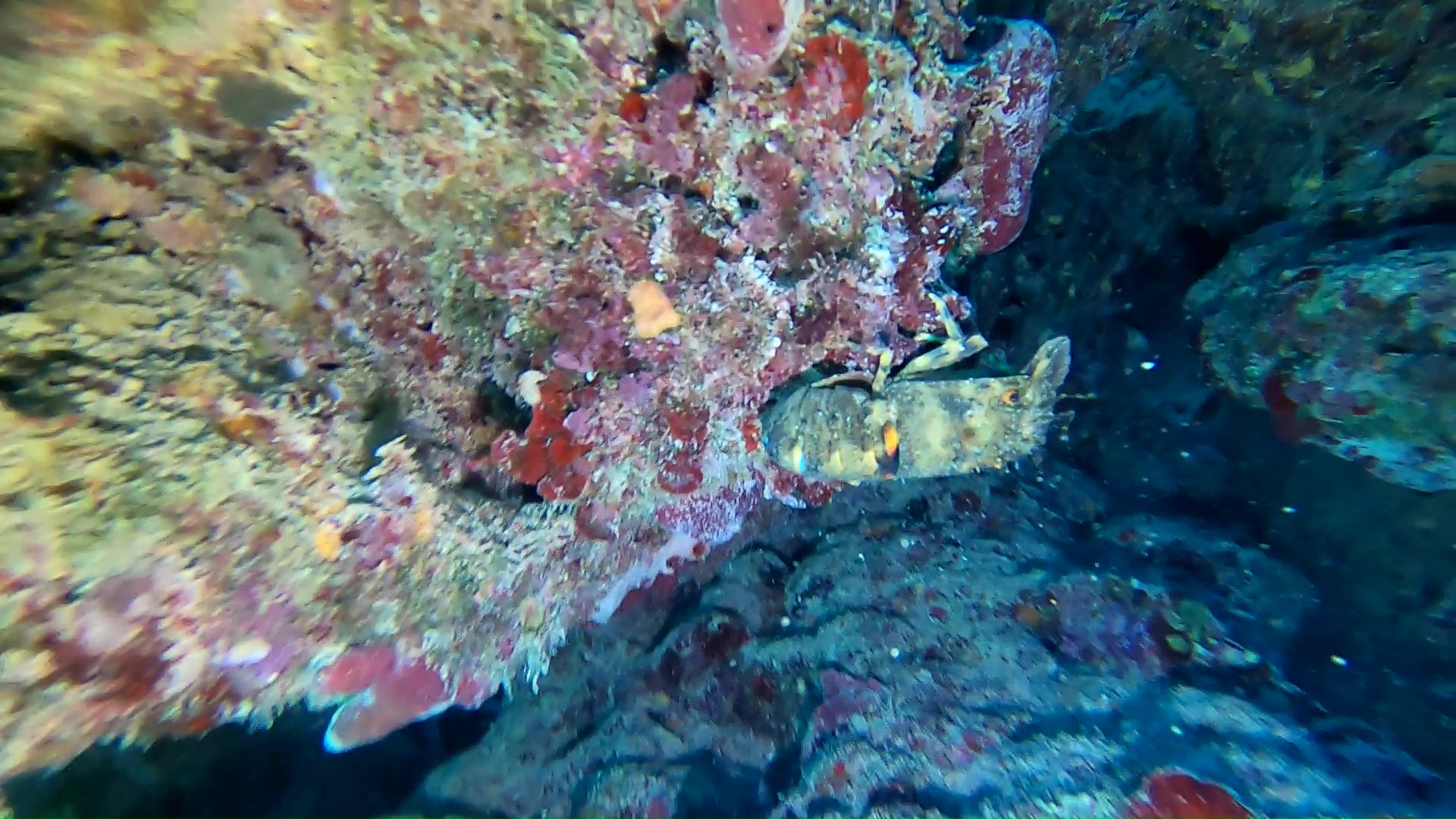Cicala di mare Magnosella - Scyllarus arctus
Magnosa, Scyllarides latus and Slipper lobster, Magnosella, Scyllarus arctus (Ciacala di mare or Batti batti) are becoming increasingly rare in our Mediterranean Sea. Slipper lobster has even become a protected species in Italy due to indiscriminate fishing and the change in the conditions of its habitat.

Scyllarus arctus Slipper lobster Cicala di mare Magnosella intotheblue.it
Both the Magnosa and the Magnosella inhabit the vaults of large holes and caves far from predators and sunlight, also for this reason they are difficult to meet and film.

Mediterranean Slipper lobster (Scyllarus arctus Linnaeus, 1758), also known as the sea cicada or batti batti, is a decapod crustacean of the Scyllaridae family. It should not be confused with Squilla mantis, also sometimes called “sea cicada” in the common language, but belonging to a different family and order.
Description
10 to 15-16 centimeters in length, not suitable for swimming. Flattened body, with flat paddle antennae, slightly purple on the edges and jagged. Brown carapace, yellow scales and spines.

Distribution
Common in the Mediterranean Sea, in the Sea of Marmara, on the coasts of Morocco, Azores, Canary Islands, also reported on the Portuguese shores. From 5 to 50 meters deep. It is a rare species, protected in Italy as it is sensitive to fishing and pollution.
Related species
Very similar to Scyllarides latus (magnosa), with which it is confused, even if the dimensions of S. latus are decidedly more considerable. Another sign of differentiation is the margin of the antennae, jagged in the S. arctus and smooth in the magnosa.
https://it.wikipedia.org/wiki/Scyllarus_arctus
https://en.wikipedia.org/wiki/Scyllarus_arctus

Cigala or magnosa Scyllarides latus (Latreille, 1803), also known as the sea cicada, is a marine decapod crustacean of the Scyllaridae family. Common names: magnosa, large sea cicada, sea cicada, grande cigale de mer, cigale de mer, cigarra, cigarra de mar, cigarrón, mediterranean slipper lobster.
Description
One of the largest crustaceans in the Mediterranean Sea (up to 45 centimeters for a weight even greater than 2 kilograms), it has the front antennae with a characteristic flat shape, with wavy and smooth edges. The carapace is parallelepiped-shaped, brown-gray in color. It is a typically nocturnal species.
Distribution
Mediterranean Sea except north Adriatic, on rocky bottoms from 10 to 100 meters deep. It is a rare species, protected in Italy.
Related species
Very similar to the Scyllarus arctus (magnosella), with which it is confused, even if the dimensions of the magnosella are decidedly smaller.
The palibacus (Palibacus praecursor), now extinct, belongs to the same family.
https://it.wikipedia.org/wiki/Scyllarides_latus
https://en.wikipedia.org/wiki/Scyllarides_latus
Gallery
VIDEO
